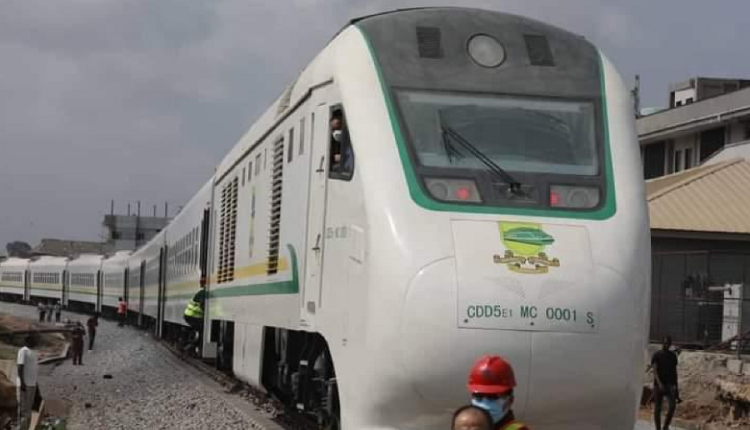BREAKING: Prospects And Challenges Of Railway Transportation In Nigeria

The Nigerian Railway Corporation (NRC) recently announced a 72-hour suspension of operations along the Warri-Itakpe rail corridor following a major engine failure that left passengers stranded in a remote, dangerously forested area in Kogi State. The NRC management admitted to multiple technical shortcomings, including the breakdown of the main train engine and a failed emergency recovery effort.
Though the NRC had announced that the Warri-Itakpe Train Service (WITS) would resume operations on April 30, 2025, this has not materialised. The Ujevwu-Itakpe railway is a standard-gauge railway in Nigeria that connects the port city of Warri to the inland town of Itakpe.
The railway project began in 1987. After a protracted construction period of more than 30 years, it was finally inaugurated in 2020 as a mixed freight and passenger line. Over the years, successive governments have promised to revamp the comatose railway infrastructure, and even though some faltering steps have been taken, they are still far from firm.
We recall that the administration of former President Olusegun Obasanjo commissioned a comprehensive report on the 25-year railway development master plan. However, the project did not take off until the Jonathan government segmented it in 2011, beginning with Abuja-Kaduna, a 186-kilometre line.
The Muhammadu Buhari administration commissioned the project in July 2016, making it the first standard gauge to be operational in Nigeria. On April 7, 2017, the Buhari administration flagged off the 157-kilometre Lagos-Ibadan standard gauge project, which will connect to Apapa Port terminals to aid the evacuation of cargoes and containers.
The Nigerian railway network runs diagonally from the South-West (Lagos) to the North-East (Nguru) and from the South-South (Port Harcourt) through Kafanchan to the North-East (Maiduguri).
Globally, railway transportation is seen as an environmentally friendly mode of mass transit, which underscores why many countries have continued to take steps to enhance the efficiency of their rail transportation industry.
We recognise that transportation is a critical factor in economic growth and development. It is a wealth-creating industry on its own, and inadequate transportation limits a nation’s ability to utilise its natural resources. Transportation distributes foods and other finished goods, integrates the manufacturing and agriculture sectors, and supplies education, medical, and other infrastructural facilities.
Unfortunately, while railway transportation performance is high in some African countries such as South Africa, Egypt, and Côte d’Ivoire (Ivory Coast), it’s not so in Nigeria. With an estimated population of over 200 million, the country’s railway currently boasts a 3,332 km Cape gauge network, which is in poor condition due to a lack of maintenance, and 669 km of standard gauge.
Most of the country’s railway infrastructure is sorry, with rail tracks vandalised and converted to farms and residential buildings. We know that the public’s neglect of railway transport is consequent on its inability to improve its operational efficiency and probably speed, thus making the road network more desirable to commuters.
This is not helped by the government’s shift in priority to the development of infrastructure for motorised transportation, which has adversely affected the performance of railway transportation in Nigeria. As a result of these developments, road transportation has continued to surpass virtually all the traffic services previously rendered by railways, with severe consequences for the state of the roads.
Despite the progress posted by the National Bureau of Statistics (NBS), the country’s railway transport accounts for an insignificant part of the transport subsector. It contributes a very small proportion of value added to the transportation system.
Stakeholders identify the challenges to the performance of railway transportation in Nigeria as poor funding and huge operating losses, inadequate locomotive and rolling stock, loss of patronage to the road transport sector and weak political commitment.
Others are poor communication facilities, government interference with the management structure, lack of freedom to set tariffs, falling rolling stock level, plummeting traffic levels (freight and passenger), inflexible bureaucracy and volatile staff training.
According to reports, the only operational segment of Nigeria’s railway network today is between Lagos and Kano and Abuja and Kaduna. At the same time, it has ceased to function in the South East Zone since 2004. Therefore, maintaining and improving existing transportation and building new infrastructure for national wealth has become more imperative than ever.
It is pertinent to recommend that operators leverage innovations in digital systems, mobile connectivity, and station developments to boost passenger comfort and convenience and encourage them to return to rail.
In our opinion, an efficient railway system will lower the cost of doing business in Nigeria and extend the lifespan of overstretched highways.
